Resources
We are located at:
North Campus BuildingRoom 120
Western University
1151 Richmond St. N.
London, Ontario
N6A 5B7 Canada
geocollections@uwo.ca
Ammonoids: A Mosasaur's Lunch
When dinosaurs ruled the land, ammonoids, extinct relatives of squids, octopuses, cuttlefish and Nautilus (Cephalopoda), were common sea creatures of the Mesozoic Era. The ammonoids reconstructed in this display are from the Bearpaw Formation, a succession of marine sedimentary rocks that record a time during the Late Cretaceous Period when the present-day prairie provinces of Canada were covered by the Western Interior Seaway.
Mosasaurs were large marine reptiles that commonly preyed upon ammonoids, as indicated by patterns of holes in some ammonoid shells that match the V-shaped arrangement of teeth in mosasaur jaws.
Acknowledgements
This display is the brainchild of Dr. Cam Tsujita. Dr. Tsujita created all of the ammonoid models, provided all specimens for this display, and provided original text for this poster and webpage. The display poster was created by Outreach Coordinator Olivia Benest with guidance from Dr. Alysha McNeil and Dr. Cam Tsujita. The display was set up by Olivia Benest, Denis Tzvetkov and Dr. Alysha McNeil. Thank you to Jon Jacobs for his assistance with creating and installing hangers for the ammonoid models.
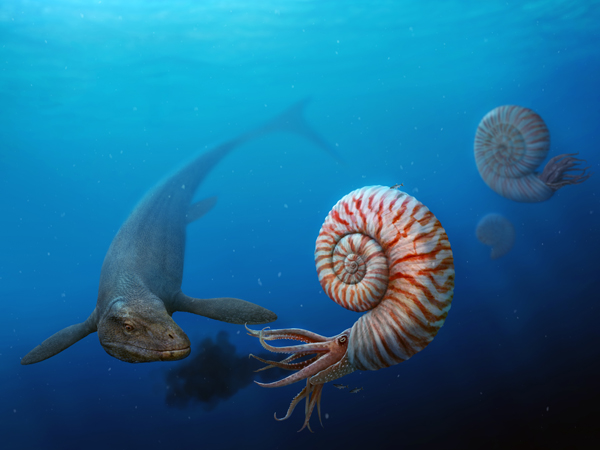
Ammonoids as Geological Tools
Owing to their high evolutionary rates and abundance, ammonoids are valuable index fossils in biostratigraphy. They are the basis of a high-resolution biostratigraphic framework in the Cretaceous Western Interior Basin of North America. Through interdisciplinary research, combining studies of shell strength, hydrodynamics, facies distributions, and stable isotope geochemistry, ammonoids have great potential as tools in basin analysis.
The ammonoids reconstructed in this display located across from Biological and Geological Sciences Building room 0143 are from the Bearpaw Formation, a succession of marine sedimentary rocks that record a time during the Late Cretaceous Period when the present-day prairie provinces of Canada were covered by the Western Interior Seaway.
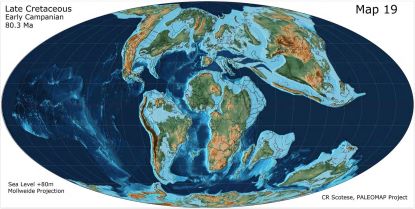
Reconstruction of the distribution of continents and smaller landmasses during the Late Cretaceous Period, about 80.3 million years ago. Map from Scotese, 2014, Atlas of Late Cretaceous Paleogeographic Maps.
Form and Function of the Ammonoid Shell
Similar to modern cephalopods such as Nautilus and Spirula, ammonoids functioned like living submarines, using a chambered shell for buoyancy. The ammonoid body was confined to the last compartment (body chamber) of the shell. As the ammonoid grew, it would periodically secrete septa within the shell to produce a multi-chambered buoyancy apparatus (phragmocone) filled with varying proportions of gas and liquid. Regulation of gas/liquid volumes within chambers of the phragmocone was accomplished by osmosis, through a thin, chitinous tube (siphuncle).
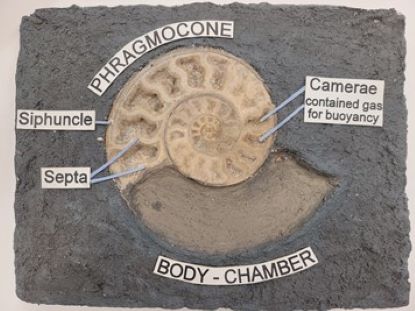
Ammonoids used jet propulsion for rapid swimming. Water was taken into the mantle cavity and ejected from a funnel (hyponome), allowing for rapid backward movement. The wide variation in shell shape probably reflects different swimming abilities among different species. Flat, coiled shells (e.g. Placenticeras) probably allowed better maneuverability and swimming speed than the more rounded coiled shells with hook-like body chambers (e.g. Jeletzkytes). Baculites, which possessed a straight, conical shell may have been adapted for rapid vertical movement.
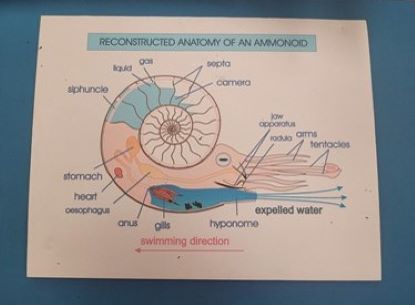
Chambered shells of cephalopods are in constant danger of implosion, owing to the hydrostatic pressure exerted upon them in the water column (1 MPa pressure = 100 m water depth). Unlike nautiloid septa, which are simple, hemispherical structures, ammonoid septa are complexly frilled. Such frilling, which reaches its highest complexity at the shell wall, maximized the support of the shell wall against implosion.
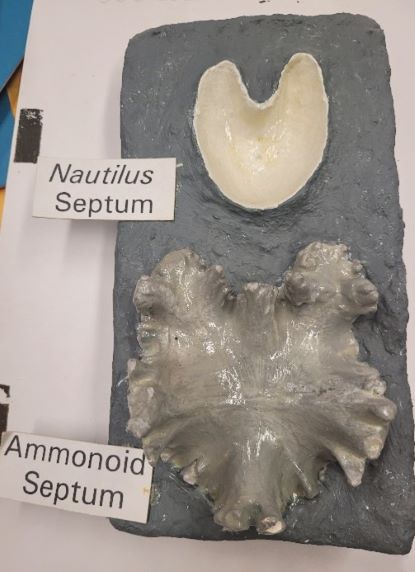
Ammonoid Habitats
It has traditionally been assumed that most ammonoids lived near the sea floor, However, recent studies suggest that ammonoids occupied a myriad of ecological niches. Some live near the sea floor, others in mid-water, and still others in surface waters. This is not surprising when one considers the diversity of life habits among modern-day cephalopods.
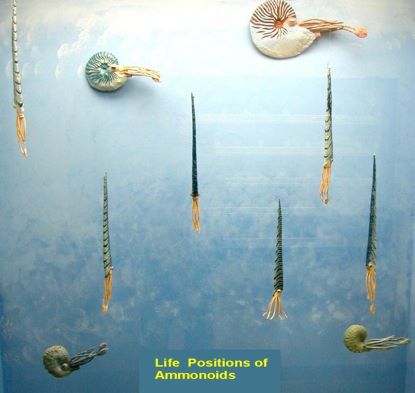
Evidence of Predation
Some ammonoids, such as Placenticeras, show direct evidence of predation. The arrangement of crater-like punctures in shells of Placenticeras form distinct arrangements that are directly comparable to the tooth pattern of mosasaurs (large swimming reptiles). Mosasaur bite marks can be seen in the large specimens of Placenticeras on the bottom of the display case across from Biological and Geological Sciences Building room 0143.
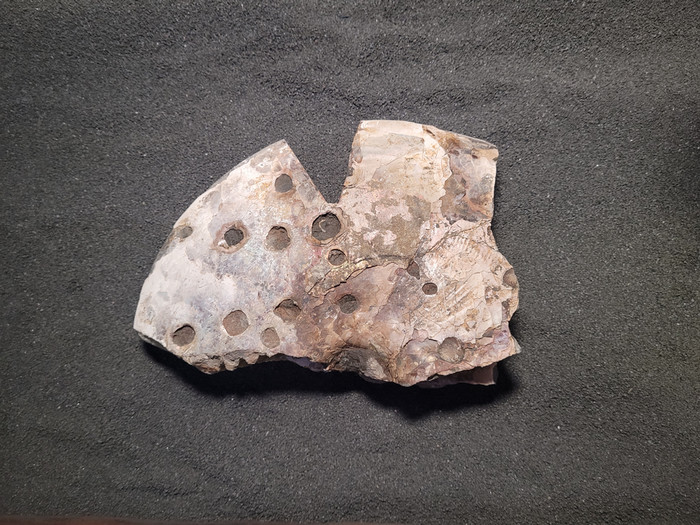
Applications
1) Fluctuations in oxygen levels in the ancient water column can be detected by studying differences in ammonoid assemblages.
2) Strength analyses of ammonoid septa provide estimates of water depth within sedimentary basins.
3) Oxygen isotope signatures of nacre among various species can provide estimates of water temperature and salinity.

